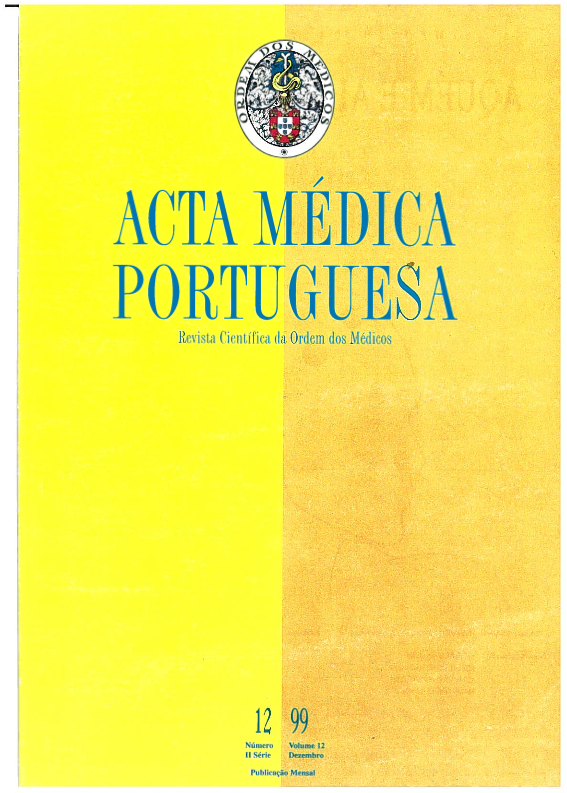Leptospirose humana. Breves considerações a propósito de uma casuística.
DOI:
https://doi.org/10.20344/amp.2168Resumo
Leptospirosis, a zoonosis with worldwide distribution, may have a broad spectrum of clinical manifestations that can delay the diagnosis, especially in wet climates where other conditions may dissimulate the main aspects. The authors describe 42 cases of patients with leptospirosis admitted to the Infectious Diseases Unit of a general hospital since 1990. The goal was to analyse epidemiological features, clinical manifestations, laboratory findings, treatment and evolution. There were 23 males (54.7%) and 19 females (45.2%), with ages ranging from 17 to 82 years. Most cases occurred in occupational settings, especially in those in contact with animals or stagnant water. All the cases had serological confirmation (by MAT or ELISA methods). Anicteric forms represented 42.9% of the total, which implies that in many cases a diagnosis is not immediately evident. The main symptoms, other than fever (97.6%) and jaundice (57.1%), were myalgia (71.4%), headache (42.8%) and nausea (33.3%). Renal involvement was common (52%), but the most severe forms occurred in 3 patients who required hemodialysis; followed by D.I.C. in 9.5%; meningitis in 4.7% and pulmonary involvement in 2.3% of the cases. The serovars most commonly identified were L. icterohaemorraghiae (28.5%), L. australis (14.3%), L. grippothyphosa (11.9%) and L. canicola (9.5%). The patients were treated with penicillin G (83.3%) or doxycyclin (9.5%). Two of them deceased (4.7%) and the remainder had a good evolution. The diagnosis of leptospirosis may be delayed if physicians fail to include this infection in the initial differential diagnosis. In view of this, the authors emphasize that when nonspecific clinical manifestations occur, a good epidemiological history is useful in proposing this diagnosis.Downloads
Downloads
Como Citar
Edição
Secção
Licença
Todos os artigos publicados na AMP são de acesso aberto e cumprem os requisitos das agências de financiamento ou instituições académicas. Relativamente à utilização por terceiros a AMP rege-se pelos termos da licença Creative Commons ‘Atribuição – Uso Não-Comercial – (CC-BY-NC)’.
É da responsabilidade do autor obter permissão para reproduzir figuras, tabelas, etc., de outras publicações. Após a aceitação de um artigo, os autores serão convidados a preencher uma “Declaração de Responsabilidade Autoral e Partilha de Direitos de Autor “(http://www.actamedicaportuguesa.com/info/AMP-NormasPublicacao.pdf) e a “Declaração de Potenciais Conflitos de Interesse” (http://www.icmje.org/conflicts-of-interest) do ICMJE. Será enviado um e-mail ao autor correspondente, confirmando a receção do manuscrito.
Após a publicação, os autores ficam autorizados a disponibilizar os seus artigos em repositórios das suas instituições de origem, desde que mencionem sempre onde foram publicados e de acordo com a licença Creative Commons









